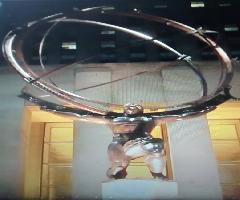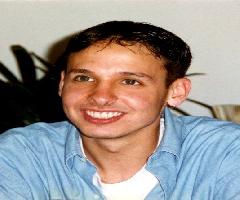Center for Ultrasound Research and Education in New Rochelle Brings advances in Breast Cancer Diagnoses over CAT Scans
An occurrence of a microcalcification - especially in the breast - is never a good thing. "It's a direct sign of breast cancer," says Karen Nussbaumer of the Center for Ultrasound Research and Education in New Rochelle, but the typical means in which the medical community instructs women to detect them, could also be a common cause.
A mammogram is a blast of radiation and cells defensively respond to this invasion as they should. “The body says something's harming you, let
Conversely, by bouncing harmless sound waves off the subject, the image returned is just as accurate – if not more – than its radioactive cousins. As evidence, she points out that an ultrasound test is usually ordered after a CAT scan to confirm the diagnosis.
But calcification isn't the only problem that the mammogram or CAT scan can amplify. Fat cells are the weakest cells in the body - thus leaving them the most susceptible to radiation. In turn, those weakened fat cells are the most likely to mutate, which by definition is considered cancer. Following the logic, if you take out these annual irradiations, she says, you probably take away a lot of cancer.
Whether or not you agree with the general consensus that the doses of radiation are not significantly effecting cancer rates, she won't direct you against the orders of your doctor. On the other hand, she believes, people should be made aware that there is a completely safe alternative in ultrasound.
What can definitely be agreed upon is the accessibility that CURE offers. "All scans are free," she says, but that doesn’t mean she stops short of the cutting edge.
Working with a company called Sieman’s, CURE puts precision in the hands of the ultrasound technologists by allowing a machine to guide the search for disease. Removing the manual search of most ultrasound centers, this is combined with a recent technology called Thermography.
Taking an infrared tour off the organs, it finds the existence of angiogenesis, which occurs as cancers develop blood vessels at the very onset. “You can pickup breast cancer ten years before any other method,” she says.
Not to be forgotten in the acronym is the education end at CURE. As is, she has no problem seeking people who come in with the type of background she had. “I delivered pizza, I sold cars, I did a little bit of everything,” she says, but she says she got lucky when she stumbled into an ultrasound program 20 years ago.
So she knows first hand that this work naturally becomes a passion and the 12, 18 or 24 month curriculum falls into line with a basis prerequisite. “All you need is a high school diploma or GED, she says.
At the same time, CURE demands a thorough understanding. “A grade of 82 is an F,” she says.
Still, the CURE approach understands that learning really is doing. Other schools cover physiology, anatomy and pathology in text book form and then send you off to a clinic, she says. We give them an environment where they work with actual patients.
Of course, with patient consent and under the eyes of fully trained technologists, which translates to an expectation that CURE can deliver on. “Our students are trained exceptionally well to be not just average but to be very, very good,” she says. With the machines and students a match, CURE seems to have it covered.


